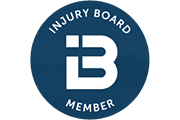The following is a paper designed to assist trial attorney in handling cases on behalf of motorcyclists who have been harmed in accidents. This paper, due to its limited length, can only provide an introduction to some of the key factors, which we attorney need to consider when handling these cases. To do this subject justice, would require an entire book. There have been many times when I have come up against a defense attorney who is a true specialist in a particular type of case, and I have felt out-gunned. If some of the information in this paper, and the talk that comes with it, help a few trial attorney to create that overwhelmed feeling in their opposition, it will have been a success.
Motorcycle riders are in a unique position on the road. They enjoy the exhilaration and freedom that come with this most revered and feared form of transportation, however they are also exposed to dangers not faced by automobile drivers or other motorists. Because other motorists often have difficulty in anticipating or seeing a motorcyclist, and because the motorcycle is more sensitive to the roadway environment, a motorcyclist faces a far higher risk of collision. Because there is no substantial protective barrier between a motorcyclist and the hazards of the road, a motorcyclist faces a much higher risk of serious injury in the event of an accident. The risks that motorcycle riders face, and the need to protect their right of accountability after an accident, become readily apparent through a review of the following statistics:
There are common things that bikers tend to do when in panic mode. Usually, these reactions help to make things worse. A motorcyclist’s most common enemies in panic situations are: roll-off the gas, tighten on the bars, a narrowed field of view, fixed attention, steering in the direction of the fixed attention, no steering (frozen), or inadequate steering, and braking errors.
Appropriately named, the Hurt report incorporates accident cause factors and identification of countermeasures, and is an excellent resource for attorney representing motorcyclists who have been hurt. This important government study has never been repeated, and is considered to be the ultimate statistical report on what happens with motorcycles and what factors are important in the understanding of motorcycle accidents. “The Hurt Report,” is available on CD ROM, and a summary of its findings follows:
“The Hurt Report”
(AKA “Motorcycle Accident Cause Factors and Identification of Countermeasures”)
A brief summary of the findings is listed below. To order the full report, contact:
National Technical Information Service
5285 Port Royal Road
Springfield, Virginia 22161
(703)-487-4600
And order:
Motorcycle Accident Cause Factors and Identification of Countermeasures, Volume 1: Technical Report, Hurt, H.H., Ouellet, J.V. and Thom, D.R., Traffic Safety Center, University of Southern California, Los Angeles, California 90007, Contract No. DOT HS-5-01160, January 1981 (Final Report) Vol.I (The Main Report and Summary) is PB81206443 (~400 pages)
Vol.II (Appendix: Supplementary Data) is PB81206450 (~400 pages)
Either document is $42.95 plus $3.00 shipping. (circa 1990)
Summary of Findings
Throughout the accident and exposure data there are special observations which relate to accident and injury causation and characteristics of the motorcycle accidents studied. These findings are summarized as follows:
Some of the following, I borrowed liberally from a British motorcycle-related web page, as it explains some of the special considerations in regard to motorcycle handling.
In order to understand motorcycle handling we should return to basics and look at the mechanisms of stability and steering, as they relate to single-track articulated vehicles (motorcycles in other words).
As a single-track vehicle, a motorcycle lacks inherent static balance, i.e. it falls over, if left to its own devices when stationary.
Once moving above a certain speed however even the most uncoordinated riders find that the machine seems to support itself. So it is obvious that there are two aspects of the balance process, the low speed case, and that in the higher speed ranges. There have always been clever riders who can balance indefinitely on a stationary bike, but for most of us, we need a minimum of forward motion before this is possible. However, at these low speeds it is necessary to move the handlebars from side to side to stay upright, and as all trials riders know, it is easier if we stand on the footrests instead of sitting down. Let’s examine why.
Fig.1below shows the rear and top views of a bike and rider. Now, if the combined center of gravity (C.of G.) is vertically above the line joining the front and rear tire contact patches, then balance is achieved, but this is an unstable situation, any small disturbance such as a light breeze will be enough to start a topple over, i.e. the C.of G. moves sideways.
This can be prevented by either of two methods or a combination of both; one is to move the tire contact patch line to under the new position of the C.of G. If the bike is stationary this can only be done to a limited extent by moving the bars, however once under way we can steer the bike to place the position of the tire line wherever we need it, and this is why it is easier to balance when moving. The other way to maintain low speed balance is by moving the combined C.of G. of both the rider and machine to above the line joining the tire contact patches. This is what trials riders are doing when moving their bodies from side to side whilst standing up. The high C.of G. of the rider has more effect on the toppling over moment and also gives more control over the position of the bike’s C.of G. Thus to a great extent the process of low speed balance is dependent on the individual skill of the rider. In addition, some bike parameters can also affect the ease of remaining upright, the main ones being:
The balance mechanism at higher speeds is more complex, but at least is largely automatic and independent of rider ability. To understand the action it is necessary to look at a few properties of gyroscopes, which is another way of describing spinning motorcycle wheels.
A spinning wheel has a very stable axis of rotation, i.e. a strong tendency to maintain its plane of rotation. In other words, while it can easily be moved laterally along the axis of spin, it resists tilting about any other axis, and more importantly, when it is tilted it automatically causes a strong twisting moment about an axis at 90 degrees to that of the original tilt. This twisting effect increases as the speed of the wheel rises, this is known as gyroscopic precession. When you have finished reading this, I expect you to go and remove the front wheel from your brother’s mountain-bike, if you then obey the following instructions you will get a graphic practical demonstration of the strength of these precessional forces, which are so vital to the balance and steering of any bike. Firstly hold the wheel upright, as in fig.2, get your young brother (well he won’t be out riding, will he?) to spin it so that the top of the wheel is moving away from you, as if it were the front wheel of a machine you were riding. If you then try to tilt the spindle to the LEFT (equivalent to banking your machine) you will find that the wheel turns instantly and strongly to the LEFT, as if steered by an invisible hand. In other words, your attempt to tilt the wheel about its fore-and-aft axis has produced a torque swiveling it about its vertical axis. Now start again but this time turn the wheel to the LEFT about a vertical axis, just as sharply and strongly it will bank to the RIGHT. Try both these maneuvers again, but do it at different wheel speeds and tilting speeds, you will see that the precessional forces depend strongly on these factors. Note particularly, the directions in which these forces operate, as this is important for the automatic retention of balance.
Let us now see how these forces keep the machine balanced and on a relatively straight path without assistance from the rider. Suppose the bike, while traveling along at a normal speed, starts to fall to the left under the action of some extraneous influence. As we have just seen, gyroscopic precession of the front wheel immediately turns it to the left. This sets the machine on a curved path (to the left), so creating a centrifugal force (to the right), which counters the lean and tends to restore the machine to the vertical, the precessional forces are thus reversed tending to restore the steering to the straight ahead position. In practice, that which we regard as riding in a straight line, is really a series of balance correcting wobbles, if we could look at the actual paths taken by the lines of the wheels, we should see that the front wheel path continually crosses that of the rear. In the explanation above, I have only described the effects on the front wheel, precessional forces are at work on the rear also, but it is much harder to steer the rear wheel independently, as the whole bike must yaw, rather than just the wheel and forks, as on the front. Hence, only a small contribution is made to the auto-balance mechanism by the rear. We have now considered balance in a straight line, but as we lean when cornering, there must be other factors at work to maintain equilibrium under these conditions.
To analyze this, we can divide it into two phases;
1. Initiating the turn,
2. Maintaining the turn.
Since the second phase is easier to analyze, let’s look at it first. The argument has raged since the days of the earliest motorcycles: What technique actually steers a motorcycle-body lean or turning the handlebars? This is no light matter. Investigations, in which accidents were reconstructed, found that in the vast majority of rider versus obstacle conflicts, the rider does not even attempt an evasive steering action that could save him or her. Much of this inaction can be blamed on conflicting information about how the motorcycle steering function works, which can lead to rider panic and uncertainty in emergency situations.
Keith Code, a leading motorcycle riding instructor and founder of the noted California Superbike School, has put a cap on this controversy with his new No Body Steering Bike (No B.S. Bike). This specially designed motorcycle proves that only steering, and not body steering/leaning, turns a bike.
More than 100 riders have tested their body steering/leaning methods on the No B.S. Bike, and all have come away with the irrefutable conclusion: Body steering and leaning does not steer a motorcycle. Steering alone turns a bike.
Riding motorcycles is not that different from hitting a golf ball. Both require thought, drills, practice and physical memory. A golfer knows when he or she has hit the ball well, even before he completes his follow-through. A road racer knows when he handles a corner well far before exit. Let’s go back to the fundamentals of steering a motorcycle. It is not feasible to steer a motorcycle through a corner in a substantially upright position, as in a car or sidecar outfit, because the centrifugal force generated would cause it to fall outward. Hence we must bank the bike inward so that this tendency is counteracted by the machines weight tending to make it fall inward. See fig.3.
Equilibrium is achieved when the angle of lean is such as to balance the two opposing moments, the one due to centrifugal force acting outward, and the other to gravitational force acting downward (both acting through the C.of G.). The actual angle, which depends on the radius of the turn and the speed of the machine, is that at which the resultant of the two forces passes through a line joining the front and rear tire contact patches. This is the steady-state roll axis. But how do we actually initiate the turn – do we lean or do we steer first? Let’s see what happens with each method. If we turn the handle-bar in the direction in which we want to go, both centrifugal force and the front wheel precession would cause the bike to topple outward, and that leads to road rash. But, if we momentarily try to turn the bar quickly in the opposite direction, (counter-steering) then these two forces will combine to bank the machine to the correct side. Gravity will then augment the banking effect and this, in turn, will give rise to gyroscopic forces helping to steer the front wheel into the curve, whereupon the processes for maintaining balance as described above take over and keep the bike on our chosen path.
This is all very well, I hear you say, but if this is the way to corner, how come we can steer a bike with no-hands? Well, it certainly is possible to do so, but only with a lot more difficulty. Precise control and tight turns are difficult to accomplish without handlebar manipulation. Just try it! Let’s consider the no-hands situation. As we saw earlier, simply banking the bike steers the front wheel in the correct direction automatically, through precession. But how do we make the bike lean in the first place, what do we have to push against? There is nothing solid to push against and so the only way to apply bank (without the facility of steering), is to push against the machine with the inertia of our own body. This means in practice, that in order to lean the bike to the right, we must initially move our body to the left. So now we have two possible methods of initiating a turn, and it is interesting to note that in both of them (banking and reverse handle-bar torque) our physical effort is in the opposite sense to that which might be thought natural, but when learning we adapt quickly and the required action becomes subconsciously automatic. It is these reverse actions that require us to learn to ride in the first place, when learning most of us wobble about out of control until our brain latches on to the fact that counter-steering and counter-leaning is the way to do it. Once the brain has switched into reverse gear, it becomes instinctive and is usually with us for life, and we could return to riding after a long layoff with no need to relearn the art of balancing or steering.
So which of these two possible methods of initiating a turn do we use in practice? We probably subconsciously combine both methods, and the pressure on the inner hand grip is partly forward (counter-steering) and partly downward (banking). Remember though, that the actual counter-steering movement is very small, since gyroscopic precession depends for its strength on the speed of movement not on the amount of movement. If you still don’t believe that steering to the opposite side works, then next time you are out riding, try jerking the bars quickly to one side, and see what happens. Leave yourself plenty of road if your reactions are a bit on the slow side. Do this at about 40 mph., and don’t blame me if you fall off. The relative proportions with which we combine the two methods depend partly on riding style but also on speed and machine characteristics. For example, a heavy machine with light wheels at low speeds demands a different technique from that applicable to a lightweight machine with heavy wheels at high speeds, and hence the two machines will have a different feel. But, humans adapt quickly and the correct technique soon becomes second nature.
It may seem strange that in the above discussion no mention has been made of such important parameters as, steering geometry, wheel and tire size and type, wheelbase, frame stiffness and so on. This is simply because, balance and the ability to start and maintain a turn can be achieved within a wide range of these parameters. That is not to say that these factors are unimportant. We shall now look a little more closely at one of the more important parameters that come under the heading of steering geometry, i.e. TRAIL. Consider first fig.4, which shows the basics of steering geometry.
The primary function of this, it is often said, is to build in a certain amount of straight line stability, in addition to that obtained by precessional effects as described above. But trail also introduces other effects, which are vital to the feel and handling of the motorcycle.
Fig.4 shows that both the front and rear wheels contact the road behind the point at which the steering axis meets intersects the ground; this gives rise to a self-centering effect on both wheels, rather like the castors on a shopping cart. The measurement of this castor is called the trail. The mechanism by which trail produces a self-centering force can be understood by reference to fig.5,
If the wheel gets displaced from the straight-ahead position, i.e. the wheel is at an angle to the direction of travel (slip angle is the technical term), a force at right angles to the tire is generated. Since the contact patch is behind the steering axis (positive trail) then this force acts on a lever arm (approximately equal to the trail) to provide a correcting torque to the angled wheel. That is to say, if the steering is deflected by some cause e.g. uneven road surface, then positive trail automatically counter-acts the displacement and gives a measure of directional stability. However, as shown earlier, we cannot just consider any steering effect in isolation, gyroscopic forces must be considered also; suffice to say, at this stage, that in this case trail and precession work in harmony to keep us on the straight and narrow.
One may be forgiven for initially thinking, that because the rear wheel trail is much greater than that of the front, the rear wheel is the more important in this respect. The reverse is actually the case for several reasons. See fig.6.
Imagine that the contact patch of each wheel is, in turn, displaced sideways by the same amount (say ½ inch.). The front wheel will then be turned by approximately 7-10 degrees (depending on the value of trail) about the steering axis, this gives rise to a slip angle of the same amount and generates a sideways force that has only the relatively small inertia of the front wheel and forks to accelerate back to the straight-ahead position. But the slip angle of the displaced rear wheel will be much less (about ½ degree) and so the restoring force will be reduced accordingly, but this also has to act on the inertia of a major proportion of the machine and rider, hence the response is much slower than is the case with the front wheel. From this, we can see that increasing the trail as a means of increasing the restoring tendency on the wheels is subject to the law of diminishing returns. It must also be emphasized that the disturbance to a machine’s direction of travel, due to a sideways displacement of the tire contact patch, is less from the rear wheel than the front because of the much smaller angle to the direction of travel that the displacement causes. To summarize, while the large trail of the rear wheel has a relatively small restoring effect, the effect of rear wheel displacement on directional stability is also small, and hence compensates. As mentioned before, trail has effects other than directional stability, let’s look at a couple of the more important ones.
If we lean a stationary machine to one side and then turn the handlebars, we find that the steering head rises and falls depending on the position of the steering. In motion, the effective weight of the bike and rider supported by the steering head is reacted to the ground through the tire contact patch. This force tends to turn the steering to the position where the steering head is lowest (i.e. the position of minimum potential energy). For a given amount of trail, this steering angle is affected by rake angle and wheel diameter, one reason why different size wheels feel different, if all else remains the same. As long as we have positive trail, as is normal, then this turning effect is into the corner. Thus the amount of front wheel trail affects the amount of steering torque that the rider must apply (hence the feel of the steering) to maintain the correct steering angle consistent with the radius of the turn and the bike’s speed. Some bikes seem to need to be held down into a corner, while others need the opposite approach. This is also influenced heavily by tire characteristics, however that is a topic which needs to be treated at great length in a separate paper.
As we all know, even when we are riding straight ahead, the steering feels lighter on wet and slippery roads than on dry. This is because as we have seen, our seemingly straight line is actually a series of balance correcting curves, with the handlebars turning minutely from side to side all the time. Also as we have seen, a small steering displacement produces a slip angle, which causes a restoring torque. For a given slip angle, this torque depends on tire properties, surface adhesion and trail. On slippery surfaces, the correcting torque is less, thus through the handlebars, we get a feedback (dependent on trail) for the amount of grip available. A bike with only a small trail value may give too much of a sense of slipperiness in the wet, and give the rider a certain degree of apprehension, whereas on the other hand, a large trail, under these conditions, may give out a feeling of security, which can easily engender overconfidence with predicable results.
You, the attorney, need to know that the geometry of the motorcycle involved in your case is critical to understanding how that motorcycle performed in an accident. The extremes in rake and trail are exemplified by chopped cruisers (like in Easy Rider) at one end of the spectrum, and race replica sport bikes at the other. These motorcycles respond to rider and roadway input in vastly different ways. These different types of motorcycles steer differently, brake differently, and feel differently to the rider. If you are trying to reconstruct a motorcycle accident, keep in mind that one size does not fit all.
There is so much more to be said about the special ways that motorcycles operate and about the special factors we attorney need to consider when handling these very specialized and fascinating cases. I have not had the space to discuss acceleration or braking, or very much about rider input, although I will try to cover these topics in the oral presentation. The more I learn about motorcycles, and the way they work, and about riding, the more prepared and confident I feel when working on a motorcycle case. I hope that this paper has improved your understanding of the dynamics of motorcycle riding, and that your biker clients will be better off for it.





